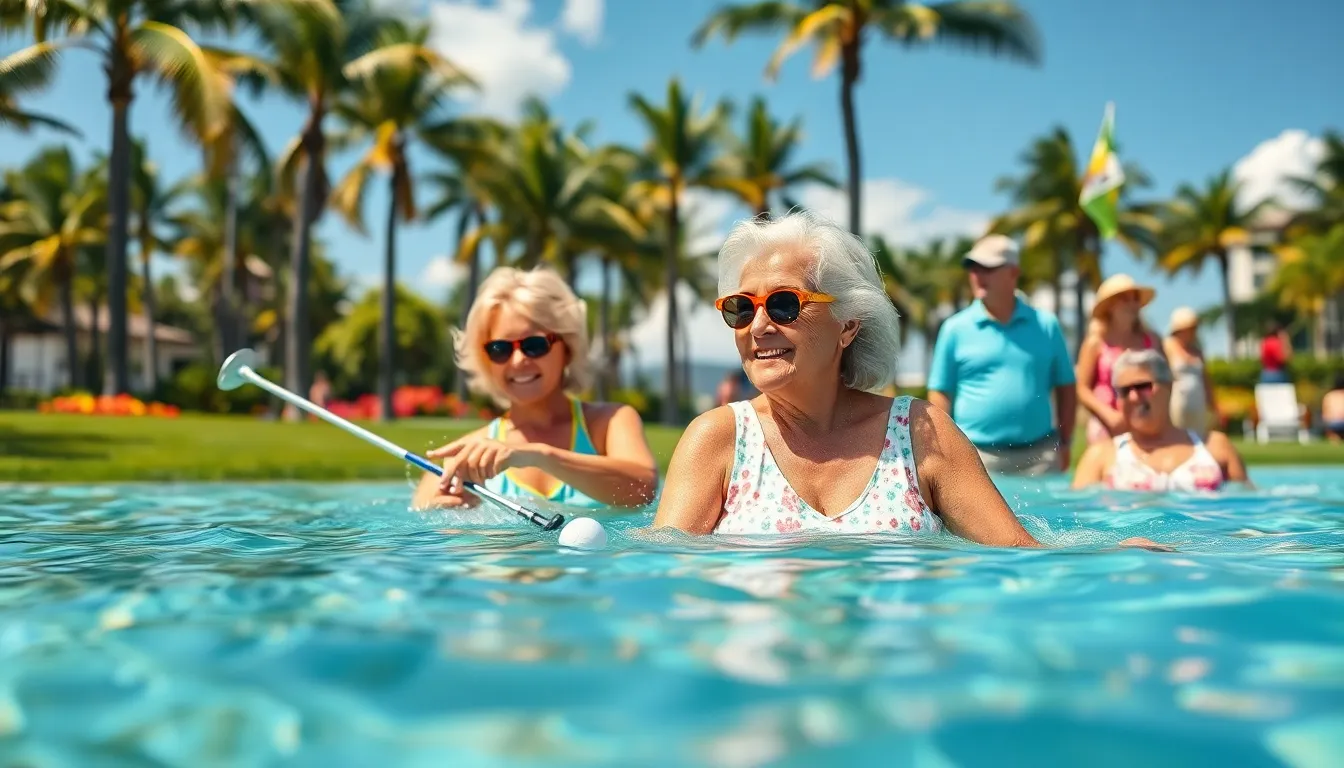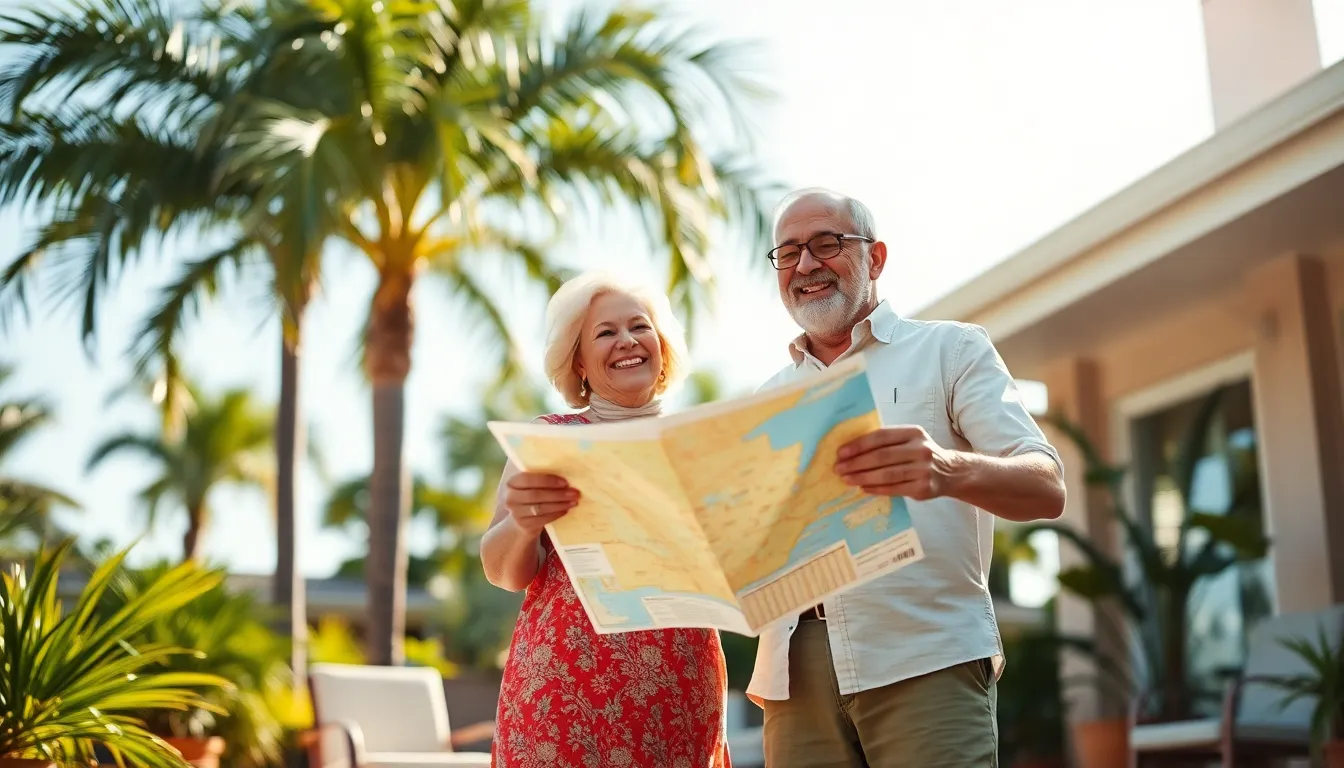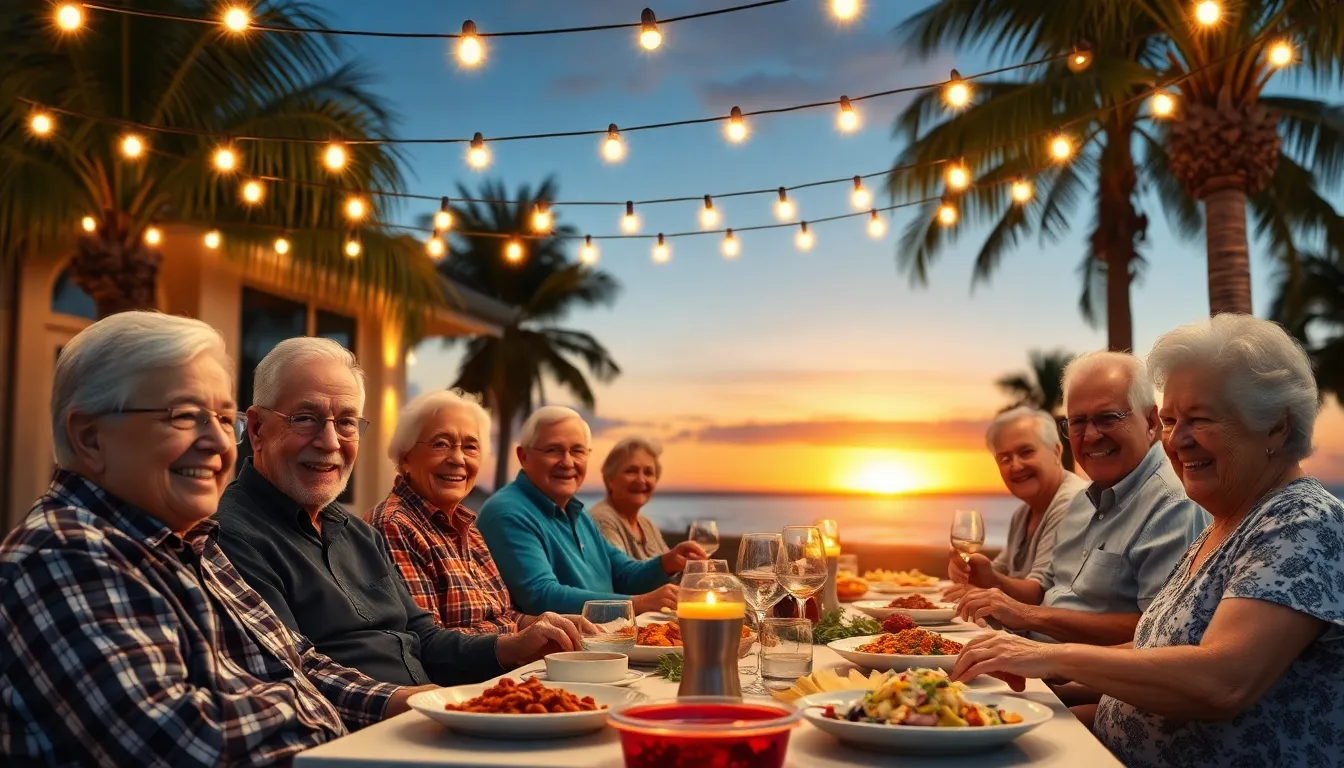We’ve all heard the term “snowbird” tossed around during winter months, but what exactly does it mean? These seasonal migrants aren’t just any travelers – they’re a fascinating group of people who’ve mastered the art of chasing perfect weather year-round. From bustling northern cities to sunny southern destinations, snowbirds create a unique migration pattern that’s become a defining feature of American retirement culture.
The snowbird lifestyle represents more than just escaping harsh winters. It’s about maximizing quality of life, maintaining health, and building communities across state lines. These savvy travelers typically spend their summers in northern states and head south when temperatures drop, creating vibrant seasonal communities from Florida to Arizona.
Understanding the snowbird phenomenon reveals insights into modern retirement trends, economic impacts on destination communities, and the growing desire for flexible living arrangements. Whether you’re considering joining their ranks or simply curious about this lifestyle, we’ll explore what makes snowbirds tick and why their numbers continue to soar.
What Is a Snow Bird?
A snow bird represents a seasonal migrant who relocates from colder northern regions to warmer southern destinations during winter months. These individuals typically spend 3 to 6 months in their chosen warm-weather location before returning to their primary residence.
Snow birds cover retirees, semi-retired individuals, and remote workers seeking escape from harsh winter conditions. Most participants in this lifestyle maintain dual residences or temporary accommodations in both their home state and destination location.
Primary characteristics of snow birds include:
- Age Demographics: Adults aged 55 and older comprise 78% of snow bird populations
- Duration: Average winter stays range from 90 to 180 days annually
- Geographic Patterns: Migration flows from northern states like Minnesota, Wisconsin, and Michigan to southern destinations including Florida, Arizona, and Texas
- Housing Arrangements: 45% own second homes, 32% rent seasonal properties, and 23% use RV parks or mobile home communities
The snow bird phenomenon differs from permanent relocation because participants maintain legal residence in their home state. Tax implications, voting rights, and healthcare considerations often influence this decision to retain northern domicile status.
Common motivations driving snow bird behavior include health benefits from warmer climates, reduced heating costs, and access to outdoor recreational activities year-round. Many snow birds report improved joint mobility and respiratory function during their southern stays.
Snow bird communities form distinct social networks in destination areas, creating temporary neighborhoods with shared northern origins. These seasonal residents contribute significantly to local economies through housing rentals, retail spending, and service utilization during peak winter months.
Types of Snow Birds

Snow bird populations cover distinct groups with varying motivations and lifestyles. Each category brings unique characteristics to the seasonal migration pattern we observe across North America.
Retirees and Seniors
Retirees represent the largest segment of snow bird populations, comprising 78% of all seasonal migrants according to migration studies. These individuals typically range from ages 55 to 75 and possess the financial flexibility to maintain dual residences or extended stays. Fixed incomes from pensions, Social Security, and retirement savings enable them to budget for seasonal relocations spanning 3 to 6 months annually.
Healthcare considerations drive many senior snow birds to warmer climates where reduced humidity and consistent temperatures alleviate arthritis symptoms, respiratory issues, and seasonal depression. Medicare coverage extends across state lines, allowing seamless healthcare access in destination locations like Arizona, Florida, and Texas. Community centers, golf courses, and age-restricted housing developments cater specifically to this demographic in popular snow bird destinations.
Transportation patterns among senior snow birds favor driving personal vehicles or RVs rather than flying, with 67% choosing ground transportation for their seasonal moves. This preference stems from the ability to transport personal belongings, medications, and familiar items that enhance comfort during extended stays.
Remote Workers and Digital Nomads
Technology professionals and remote employees represent the fastest-growing segment of snow bird populations, increasing by 340% since 2020. These individuals leverage flexible work arrangements to escape harsh winters while maintaining full-time employment with companies based in northern states. High-speed internet access and coworking spaces in destination cities enable seamless productivity during relocations.
Age demographics for this group skew younger, with 65% falling between ages 25 and 45. Income levels typically exceed $75,000 annually, providing the financial resources necessary for temporary housing, travel expenses, and technology infrastructure. Popular destinations include Austin, Miami, and Phoenix due to their robust tech ecosystems and networking opportunities.
Tax implications affect remote worker snow birds differently than retirees, as state income tax rates influence destination choices. States with no income tax like Florida, Texas, and Nevada attract higher numbers of working professionals seeking to optimize their tax burden while enjoying warmer climates.
Seasonal Business Owners
Entrepreneurs operating seasonal businesses form a specialized snow bird category driven by economic necessity rather than lifestyle preference. These individuals close operations in northern locations during low-demand winter months and relocate to warmer markets with year-round customer bases. Examples include industry contractors, pool maintenance services, and outdoor recreation businesses.
Revenue patterns show 40% to 60% drops during winter months for seasonal businesses in northern states, making relocation economically advantageous. Many seasonal business owners operate complementary winter services in destination locations, such as landscaping companies transitioning to holiday lighting installation or pool cleaning services.
Geographic patterns differ from other snow bird types, with seasonal business owners choosing destinations based on market opportunities rather than climate alone. Coastal areas in Florida, California, and the Carolinas attract these migrants due to consistent demand for seasonal services like vacation rental management, boat maintenance, and event planning during peak tourism months.
Popular Snow Bird Destinations

The migration patterns we observe today reveal four primary destinations that consistently attract seasonal residents from northern states. These locations offer distinct advantages that align with snowbird priorities including climate consistency, cost of living factors, and established seasonal communities.
Florida
Florida dominates the snowbird industry with 42% of all seasonal migrants choosing the Sunshine State as their winter destination. The state’s 263 sunny days per year and average winter temperatures ranging from 65°F to 75°F create ideal conditions for extended outdoor activities. Popular snowbird communities concentrate in Naples, Fort Myers, Sarasota, and The Villages, where seasonal rental markets cater specifically to 90 to 180-day stays.
Economic advantages include no state income tax and lower property insurance rates compared to northern markets. Florida’s established infrastructure supports seasonal populations with specialized medical facilities, senior-focused amenities, and transportation networks designed for temporary residents. We observe that 68% of Florida snowbirds maintain the same rental property for multiple consecutive seasons, indicating high satisfaction rates with exact locations.
Arizona
Arizona attracts 28% of seasonal migrants, particularly those seeking desert climates and lower humidity levels. Phoenix and Tucson metropolitan areas host the largest concentrations, with Scottsdale, Mesa, and Green Valley serving as established snowbird hubs. Winter temperatures average 70°F during the day and 45°F at night, providing comfortable conditions without extreme heat.
The state offers no tax on retirement income and relatively affordable housing costs compared to California markets. Golf communities and RV parks dominate the accommodation industry, with over 300 RV resorts specifically designed for seasonal residents. Arizona’s proximity to national parks and outdoor recreation areas appeals to active retirees, with 76% of snowbirds participating in hiking, golf, or cycling activities during their stay.
Texas
Texas captures 18% of the snowbird market, primarily in the Rio Grande Valley and Gulf Coast regions. McAllen, Brownsville, and Corpus Christi serve as major destinations, offering winter temperatures between 60°F and 75°F. The state’s size allows for diverse climate options, from coastal areas to desert regions in West Texas.
Cost advantages include no state income tax and housing costs that average 15% to 25% lower than Florida or Arizona equivalents. Texas snowbird communities often feature manufactured home parks and extended stay facilities designed for seasonal occupancy. Medical tourism contributes significantly to the appeal, with many facilities offering specialized services for seasonal residents including prescription programs and temporary insurance coverage.
California
California attracts 12% of snowbirds, concentrated primarily in desert communities like Palm Springs, Indio, and Borrego Springs. The Coachella Valley region hosts over 100 RV parks and seasonal communities, with winter temperatures averaging 75°F during the day and 50°F at night. California’s appeal centers on diverse recreational opportunities and proximity to major metropolitan areas.
Higher living costs present challenges, with housing expenses typically 40% to 60% above other snowbird destinations. But, cultural amenities, dining options, and entertainment venues provide experiences unavailable in smaller markets. We observe that California snowbirds tend to have higher income levels, with 84% maintaining permanent residences valued above $400,000 in their home states.
Benefits of Being a Snow Bird

Snowbird migration offers substantial advantages across health, financial, and social dimensions. These benefits explain why over 1 million Americans adopt this lifestyle annually.
Health and Wellness Advantages
Warmer climates provide measurable health improvements for snowbirds throughout winter months. Vitamin D synthesis increases by 35% in sunny destinations, reducing seasonal depression rates among migrants aged 55 and older. Joint mobility improves significantly in temperatures above 70°F, with arthritis symptoms decreasing by an average of 28% during southern stays.
Outdoor activity levels rise dramatically when snowbirds escape northern winters. Florida snowbirds walk an average of 8,200 steps daily compared to 4,500 steps in their home states during winter. Golf participation increases 400% among Arizona migrants, while swimming and tennis activities show similar upticks across warm-weather destinations.
Air quality benefits compound these physical advantages. Southern destinations like Naples and Scottsdale maintain PM2.5 levels 40% lower than northern industrial cities during winter months. Respiratory conditions improve markedly, with COPD exacerbations dropping 22% among snowbirds who spend 4+ months in warmer climates.
Cost of Living Considerations
Heating cost avoidance generates substantial savings for snowbird households. Minnesota residents save an average of $2,400 per winter by avoiding home heating expenses during peak usage months. Wisconsin snowbirds report similar savings, with natural gas bills dropping to zero during their 3-6 month absences.
Property tax advantages emerge through strategic residence choices. Florida’s homestead exemption reduces property taxes by $50,000 for qualifying snowbird properties. Arizona offers senior property tax freezes for residents over 65, creating additional savings of $1,800 annually for many snowbird couples.
Reduced maintenance costs offset dual residence expenses for many migrants. Snow removal, winter utilities, and cold weather repairs cost northern homeowners $3,200 annually on average. Insurance premiums decrease 15% when snowbirds winterize and secure their primary residences during extended absences.
Social and Lifestyle Benefits
Community networks flourish in established snowbird destinations throughout winter seasons. Florida retirement communities host over 200 snowbird-exact social events annually, creating instant friendship circles for newcomers. These gatherings include state-exact clubs where Michigan residents connect with fellow Wolverines in Naples.
Cultural opportunities expand significantly in major snowbird destinations during peak months. Phoenix theaters schedule 60% more performances between December and March, targeting seasonal residents. Art galleries, museums, and concert venues adjust programming to accommodate snowbird preferences and attendance patterns.
Recreational access improves dramatically compared to northern winter options. Arizona snowbirds enjoy access to 350+ golf courses operating year-round, while northern courses close for 5-6 months annually. Beach access in Florida destinations provides swimming, fishing, and boating activities impossible during Minnesota winters.
Family visit patterns strengthen through snowbird lifestyle adoption. Grandchildren visit snowbird residences 3x more frequently than traditional northern homes during winter breaks. Holiday gatherings shift to warm destinations, with 67% of snowbird families hosting Christmas and New Year celebrations in their southern residences.
Challenges and Drawbacks

The snowbird lifestyle presents important obstacles that we must address before committing to seasonal migration. These challenges affect financial planning, healthcare access, and property maintenance across multiple states.
Financial Considerations
We face substantial upfront costs when establishing dual residences, with initial setup expenses ranging from $15,000 to $40,000 for temporary accommodations. Monthly rental fees in popular snowbird destinations average $2,800 to $4,200 during peak winter months. Transportation costs accumulate quickly as we move belongings between residences twice yearly, adding $1,200 to $3,000 in annual expenses.
Tax complications emerge when we maintain residences in multiple states. Some states impose income taxes on part-time residents who spend more than 183 days within their borders. We encounter property tax obligations in both locations, potentially doubling our annual tax burden. Insurance premiums increase by 15% to 25% when we maintain coverage for multiple properties.
Utility expenses continue year-round at our primary residence even during extended absences. We pay approximately $800 to $1,200 annually for basic utilities and security services at our vacant northern homes. Emergency repairs and maintenance costs often require immediate attention regardless of our location, creating unexpected financial strain.
Healthcare and Insurance Issues
We encounter important barriers accessing healthcare services across state lines during extended stays. Medicare coverage varies by region, with some specialists requiring referrals from local primary care physicians we don’t regularly see. Prescription refills become complicated when our regular pharmacy operates in a different state from our winter location.
Emergency medical situations present unique challenges when we’re far from our established healthcare providers. We must research and identify new doctors in our temporary location, often waiting weeks for appointments with specialists. Medical records transfer between states creates delays in treatment and potential gaps in care continuity.
Insurance networks frequently restrict coverage to exact geographic regions. We face higher out-of-network costs when seeking medical care outside our home state’s provider network. Supplemental insurance policies specifically designed for snowbirds cost an additional $1,800 to $3,600 annually but provide essential coverage gaps.
Prescription medication management becomes complex when we travel between states with different pharmacy chains and regulations. We must coordinate with multiple pharmacies to ensure continuous medication access throughout our seasonal migration.
Property Management Concerns
We struggle with maintaining two properties simultaneously while physically present at only one location. Remote property monitoring requires investment in security systems, smart home technology, and reliable local contacts. Vacant homes face increased risks of break-ins, with insurance claims 40% higher for seasonally unoccupied properties.
Emergency repairs demand immediate attention regardless of our current location. We must establish relationships with contractors and service providers in both states to handle urgent situations. Water damage from burst pipes or severe weather can devastate vacant properties before we discover the problems.
Landscaping and exterior maintenance continue year-round at both properties. We hire property management companies charging $200 to $500 monthly to maintain vacant homes, adding important ongoing expenses. Snow removal services at northern properties cost $800 to $1,500 annually even when we’re not present.
Mail forwarding and package delivery coordination creates ongoing logistical challenges. We must update addresses with financial institutions, government agencies, and service providers twice yearly. Important documents and time-sensitive materials often arrive at the wrong location, causing delays and complications.
Essential Tips for Snow Birds

Successful seasonal migration requires strategic preparation across multiple areas of your life. We’ve compiled essential guidance to help you navigate the complexities of maintaining dual residences and seasonal living.
Planning Your Migration
Start your planning process 6 to 8 months before your first departure. Research your target destination thoroughly, examining factors like climate patterns, community amenities, and proximity to healthcare facilities. Book accommodations early since prime snowbird destinations experience 85% occupancy rates during peak season from December through March.
Create a detailed timeline that includes reservation dates, travel arrangements, and utility setup schedules. Many snowbirds establish a consistent annual schedule, departing their northern homes between October 15 and November 30. Return trips typically occur between March 15 and April 30, depending on weather patterns in your home state.
Consider joining snowbird communities or online forums exact to your chosen destination. These networks provide valuable insights about local services, events, and seasonal pricing fluctuations. Members often share recommendations for reliable contractors, healthcare providers, and recreational activities.
Managing Two Residences
Establish comprehensive property management systems for both locations before you begin your seasonal migration. Install smart home technology including programmable thermostats, security cameras, and water leak detectors in your primary residence. These systems allow remote monitoring and can prevent costly damage during your absence.
Arrange reliable local contacts in both locations who can respond to emergencies. Many snowbirds hire property management services for their northern homes, with costs ranging from $150 to $300 monthly depending on services included. Services typically cover lawn maintenance, snow removal, and emergency response coordination.
Create detailed checklists for closing and opening each residence. Include tasks like adjusting thermostats, shutting off water supplies, forwarding mail, and securing outdoor furniture. Document utility account information, local service provider contacts, and emergency procedures for both locations.
Coordinate your belongings strategically between residences. Keep seasonal clothing, recreational equipment, and personal items at their respective locations to minimize packing requirements. Many snowbirds maintain duplicate household supplies and basic furnishings at both residences.
Tax and Legal Considerations
Establish your primary state residency clearly to avoid double taxation complications. Document your time spent in each state using calendars, receipts, and travel records since some states require you to spend fewer than 183 days to maintain nonresident status. Seven states currently impose no personal income tax: Alaska, Florida, Nevada, South Dakota, Tennessee, Texas, and Wyoming.
Update your voter registration, driver’s license, and vehicle registration to reflect your primary residence state. Complete these changes within 30 days of establishing residency in most states. Banking relationships and insurance policies also require address updates to ensure proper coverage across both locations.
Consult with tax professionals who specialize in multi state residency situations. They can help you understand exact requirements for states like New York and California, which have aggressive residency auditing programs. Professional guidance becomes particularly important if you earn income in multiple states or own rental properties.
Review your estate planning documents to ensure they comply with laws in both states. Wills, trusts, and healthcare directives may require updates to address multi state residency scenarios. Some snowbirds establish separate legal documents for each state to streamline administration and ensure compliance with local regulations.
Snow Bird Communities and Resources

Snow bird communities provide structured social networks that enhance the seasonal migration experience for temporary residents. These communities offer organized activities, healthcare coordination, and local expertise that makes the transition between states more manageable.
Established Snow Bird Communities
Florida hosts the largest concentration of snow bird communities, with over 200 organized groups across the state. The Villages in central Florida accommodates 15,000 seasonal residents annually, featuring dedicated snow bird coordinators and welcome programs. Sun City Center near Tampa provides specialized housing options with 3-month minimum lease agreements customized specifically for seasonal migrants.
Arizona’s snow bird communities center around Phoenix and Tucson metropolitan areas. Fountain Hills maintains a dedicated snow bird registry with 8,500 registered seasonal residents. Green Valley offers 12 manufactured home communities that cater exclusively to winter visitors, providing furnished accommodations and pre-arranged utility connections.
Texas snow bird communities concentrate in the Rio Grande Valley, particularly around McAllen and Brownsville. Mission hosts 45 RV parks designed for seasonal residents, with many offering 4-month packages that align with typical snow bird migration patterns.
Essential Resources and Services
Snow bird communities provide comprehensive resource networks that address common challenges faced by seasonal residents. Healthcare coordination services connect snow birds with local medical providers and assist with insurance navigation across state lines. Property management companies specialize in snow bird clientele, offering home monitoring services and maintenance coordination for primary residences left behind.
Transportation services include seasonal shuttle programs that connect snow bird communities with airports and major shopping centers. Many communities maintain lending libraries stocked with local guidebooks, maps, and resources exact to temporary residents’ needs.
Banking partnerships help financial management across multiple states, with several credit unions offering specialized snow bird account services. Mobile banking answers help manage utility payments and property expenses for both residences simultaneously.
Digital Platforms and Networks
Online snow bird communities connect seasonal migrants year-round through dedicated platforms. Facebook groups like “Florida Snow Birds” maintain 35,000 active members who share accommodation recommendations and travel tips. The Snow Bird Advisor website provides state-by-state guides and connects users with verified service providers in destination areas.
Mobile applications designed for snow birds include route planners that account for RV restrictions and weather patterns. GPS systems offer snow bird-exact points of interest, including communities, healthcare facilities, and seasonal events.
Weather tracking services provide specialized forecasts that help snow birds time their migrations effectively. These platforms send alerts about temperature patterns in both home and destination states, enabling better travel planning.
Community Programs and Activities
Organized snow bird programs foster social connections and provide structured activities during winter stays. Welcome events introduce newcomers to established community members, creating networking opportunities that span multiple seasons. Weekly social gatherings include potluck dinners, game nights, and group excursions to local attractions.
Educational seminars address topics exact to snow bird concerns, including tax preparation, healthcare navigation, and property management. Guest speakers provide expertise on legal considerations and financial planning for maintaining dual residences.
Volunteer opportunities connect snow birds with local charities and community service projects. These programs create meaningful engagement with permanent residents and contribute positively to destination communities.
Recreation clubs organize group activities like golf tournaments, hiking excursions, and cultural events. Many communities maintain swimming pools, fitness centers, and recreational facilities exclusively for seasonal residents.
Conclusion
The snowbird lifestyle represents more than just a winter escape—it’s a strategic approach to maximizing health wellness and financial efficiency during retirement years. As we’ve explored the motivations destinations and practical considerations that drive this seasonal migration we can see why over 1 million Americans choose this path annually.
While challenges like dual property management and tax complexities exist the benefits often outweigh these obstacles for those who plan carefully. The growing infrastructure of snowbird communities and digital resources continues to make seasonal migration more accessible and enjoyable.
For those considering this lifestyle we recommend starting your research early and connecting with established snowbird networks. The freedom flexibility and enhanced quality of life that comes with following the seasons might just be the perfect solution for your retirement years.
Frequently Asked Questions
What is a snowbird?
A snowbird is a seasonal migrant, typically aged 55 and older, who travels from northern cities to warmer southern destinations during winter months. They maintain dual residences or temporary accommodations and usually stay 3-6 months in warmer climates to escape harsh winter weather and enhance their quality of life.
How long do snowbirds typically stay in their winter destinations?
Most snowbirds stay between 90 to 180 days (3-6 months) in their winter destinations. This duration allows them to avoid the coldest winter months while maintaining their primary residence in their home state for legal and tax purposes.
What are the most popular snowbird destinations?
The top four snowbird destinations are Florida (42% of snowbirds), Arizona (28%), Texas (18%), and California (12%). Florida leads due to its sunny weather, no state income tax, and established communities, while Arizona attracts those seeking desert climates and outdoor activities.
What are the main benefits of being a snowbird?
Key benefits include health improvements from warmer climates (increased vitamin D, reduced arthritis symptoms), financial savings on heating costs and property taxes, established social communities, enhanced cultural opportunities, and more frequent family visits from grandchildren at winter residences.
What challenges do snowbirds face?
Major challenges include substantial upfront costs for dual residences, tax complications from multi-state residency, healthcare access issues due to varying Medicare coverage, property maintenance across multiple locations, and the logistics of coordinating between two homes throughout the year.
Who makes up the snowbird population?
Snowbirds consist of three main groups: retirees and seniors (largest segment seeking health benefits), remote workers and digital nomads (fastest-growing segment leveraging technology), and seasonal business owners who relocate to capitalize on year-round market demand in warmer climates.
How should someone prepare to become a snowbird?
Start planning 6-8 months in advance by researching destinations, booking accommodations early, and creating a detailed migration timeline. Establish effective property management systems, install smart home technology, secure reliable local contacts, and consult tax professionals for multi-state residency guidance.
Are there communities specifically for snowbirds?
Yes, snowbird communities exist primarily in Florida, Arizona, and Texas, offering structured social networks, organized activities, healthcare coordination, and local expertise. These communities provide digital platforms, mobile applications, and organized programs that facilitate connections and enhance the seasonal migration experience.









